How to Grow and Cook Nutrient Dense Foods
This post may contain affiliate links. Read my full disclosure here.
Did you know that the nutritional value of store-bought produce declined by 10% to 20% in the second half of the twentieth century? The low nutrient density of grocery store vegetables may be one reason why we crave more even after we’ve eaten our recommended daily allowance. The good news is that you can easily learn how to grow and cook nutrient dense foods. These fruits and vegetables that taste so good even your kids will ask for more.

Learn to taste good nutrition
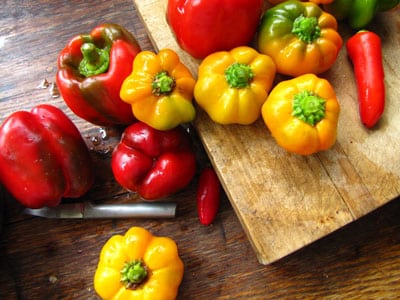
The first step in your journey toward nutrient density is figuring out how to tell the difference between watered-down “baby carrots” from the grocery store and crisp, sweet gems pulled from your garden row. Many gardeners buy Brix meters, which are an inexpensive way to measure sugar content, with the theory being that produce higher in sugars is also higher in vitamins and minerals. You don’t need to spend any cash, though — it’s pretty simple to train your taste buds and eyes to do the same job.
Learning to pay attention to the sweetness of the vegetables we eat is easy, although you might need to cut down on your consumption of sugary treats to recalibrate your sweet sensor. Sweet and complex flavors are both indicators of higher nutritional value, as long as you haven’t added sauces or spices. Get into the habit of sampling a bite or two of your produce raw to calculate its sweetness as you chop and you’ll soon be able to tell high- and low-Brix foods apart.
Color is another good indicator of nutrition. Brighter orange carrots, winter squash, and peaches tend to be richer in vitamin A, while redder apples have usually spent more time exposed to the sun and are higher in vitamin C. As long as you’re not eating lollipops (or artificially-colored oranges), bright colors and sweet flavors are good for you.
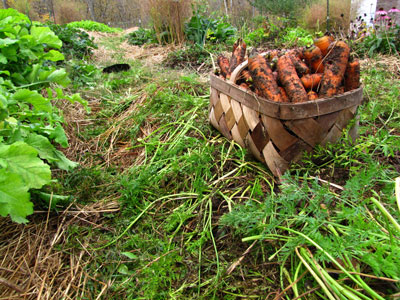
Pay attention to micronutrients in the garden
Now you’re ready to plan your garden so you’re growing fruits and vegetables bursting with flavor. Many wine-makers will tell you that the best grapes have to struggle a little, and this is true of quality vegetables too. Don’t over-fertilize and over-water your garden or you’ll end up with watery strawberries like the kind sold in the grocery store. On the other hand, a few bug-nibbles can tempt the plant to pack away more vitamins in its leaves and fruits, so get used to slightly imperfect vegetables.
No-till gardening techniques and homegrown compost will keep your soil in top condition so plants will be able to find micronutrients. In both cases, the key is organic matter and beneficial microorganisms, which work together to hold micronutrients in place and make them available to plants. If micronutrients aren’t within reach, your plants won’t be able to provide those micronutrients on your plate — even plants are what they eat.
Soil tests are handy for determining whether your dirt is deficient in the nutrients plants need to grow and thrive. Soils lacking essential nutrients can be recharged with rock dust or by mulching with appropriate dynamic accumulator plants. Similarly, leaves from deep-rooted trees can be a good addition since these behemoths soak up micronutrients that have washed out of the reach of smaller plants. Be careful when using tree leaves on the vegetable garden, though — the high C:N ratio of this mulch is more appropriate around woody perennials like apple trees.
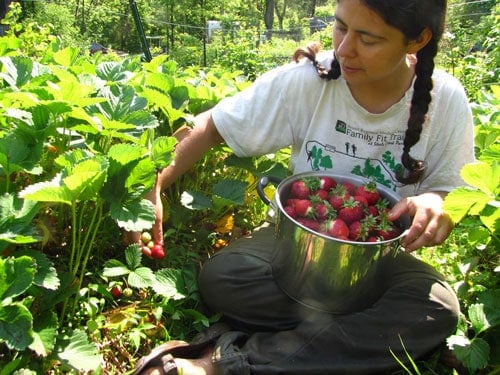
Harvest at peak nutritional levels
Pick fruits and vegetables on a sunny afternoon, when sugars, iron, and vitamins A and C are at their peak. Leafy greens are often most nutritious (and tastiest) at the baby stage, but fruits should be plucked when ripe. If possible, pick right before your fruits and vegetables are going to be cooked and eaten — as soon as they’re severed from the plant, both foods begin to lose vitamins quickly.
If you must store your produce, put it in the fridge rather than leaving it out in the sun or on a hot counter — wilting results in drastic reductions of vitamin C. On the other hand, keep okra, cucumbers, green beans, peppers, eggplant, and tomatoes on the counter since cold temperatures shock these warm-weather-lovers and reduce their nutritional profile. Meanwhile, don’t cut up fruits and vegetables until you’re ready to cook or eat them since early slicing results in loss of vitamins (with the exception of garlic, which will boost your immune system more if diced several minutes before cooking).
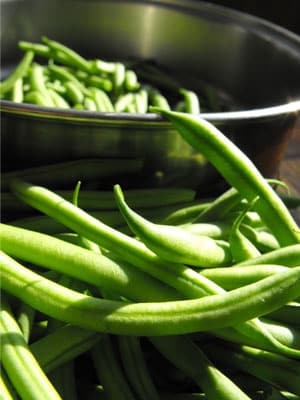
Would you like to save this?
Don’t lose nutrients in the kitchen
Wash fruits and vegetables using as little water as possible, or don’t wash produce at all if you’re picking homegrown vegetables that were kept out of the dirt with mulch and were never sprayed with chemicals. Many of the vitamins found in vegetables are water-soluble, so they can soak out into your rinse water, especially if the outer skin of the vegetable has been pierced. Similarly, try to keep cooking times short and prevent your vegetables from touching water — that means sauteing, steaming, and baking are better choices than boiling.
Train yourself to enjoy the skins since many fruits and vegetables concentrate vitamin C, niacin, riboflavin, and vitamin A there. Most of the protein in potatoes is right under the skin, and all fruit and vegetable skins are high in fiber. Keeping salt out of your vegetables while they’re cooking also helps reduce loss of nutrients.
Applying the same techniques while preserving food will maintain flavor and nutrients. Anything that stores well in a root cellar will be tastiest and most nutritious if kept there, and freezing or drying are tied for the next most nutritious preservation techniques. If you don’t mind the strong flavors, fermented vegetables can actually gain some nutrients during preservation due to the action of microorganisms. Canning comes in last due to the long processing times and water saturation.
Do you have other tips for making sure your gardening and cooking efforts are worth the time? I hope you’ll chime in with your own nutrient-dense recipes and techniques.
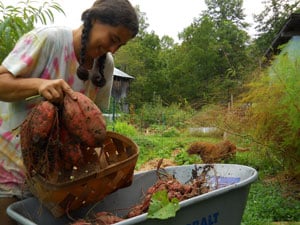
This is a guest post by Anna Hess.
Anna Hess and her husband homestead on 58 acres of land in southwest Virginia, where they grow all their own vegetables and an increasing amount of their fruit and meat. Anna’s new book, The Weekend Homesteader, starts you at the beginning as you learn to grow, cook, and preserve nutrient-dense foods. You can read more about her adventures on her blog at www.WaldenEffect.org.
